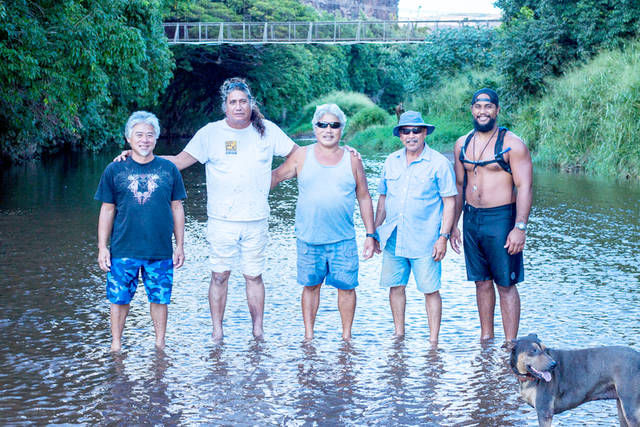There’s an old island saying: Ola i ka wai. Water is life. Those of us who live and farm in the Waimea Valley know this all too well. For generations, we watched the Waimea River’s water diverted, first to feed
There’s an old island saying: Ola i ka wai. Water is life.
Those of us who live and farm in the Waimea Valley know this all too well. For generations, we watched the Waimea River’s water diverted, first to feed plantations, and then by corporate farms who took over operating the Kekaha and Koke‘e ditches.
Tens of millions of gallons of water were diverted from the river every day, often causing large stretches of the river to run dry, cutting off the connection between the mountains and the sea.
But thanks to a settlement agreement approved by the state Commission on Water Resource Management on April 18, life-giving water will once again flow the length of one of Hawaii’s longest and largest rivers.
This means so much for our community. The river was basically dying — and for no good reason. After the plantations that originally diverted water from the river went out of business, the water should have been restored to the river, for the public’s benefit.
Instead, the diversions continued, and the system of dams and ditches that diverted the water was upgraded so that there were fewer leaks — although those leaks had provided much of the water that remained in the river.
But the diverted water wasn’t being put to good use. That’s one reason those of us who formed Po‘ai Wai Ola to do something about this were so concerned. We knew this water was being wasted.
Working with Earthjustice, we discovered that diverted water was being dumped from the Koke‘e Ditch into Kauhao Gulch, a normally dry gully that leads to Kauai’s North Shore. Meanwhile, the Kekaha Ditch was taking additional water from Waimea River — about 20 million gallons per day — to run an inefficient, 100-year-old power plant, which turned the public’s water into private profit.
This waste was offensive. That water should have been allowed to flow down the river, where it would benefit everyone.
And now it will. The waters have already begun to flow once more, and this settlement ensures that a complete diversion of the river will never be allowed again. From now on, the guiding principle will be that water can only be diverted for good use.
Genuine agricultural needs — including the needs of Hawaiian homesteaders – will be respected, and some water may be diverted for a modern hydroelectric project that would use solar power to pump water up to a reservoir during the day that would flow back down at night to generate power, a kind of closed-loop system that doesn’t waste water.
Most importantly, the river’s needs will always be met first.
Throughout our lives, those with power and money have decided what to do with Waimea River’s precious water, which is supposed to belong to all of us. In approving this agreement, the Water Commission has recognized its responsibility to treat the water flowing in the river as a public trust.
We are hopeful the Commission will now set minimum instream flow standards for every dry, diverted stream in Hawai‘i nei, because doing that is pono and would bring life to other communities.
Through this process, our community has become far more aware of our rights, and we will remain vigilant to make sure those rights are respected.
Pō‘ai Wai Ola’s fight to restore Waimea River has always been about our community and about future generations. We hope to see the river come back to life in ways that will benefit our grandkids — and their grandkids.
•••
John A‘ana, Jim A‘ana, Galen Kaohi, Kaina Makua and Wesley Yadao are on Po‘ai Wai Ola’s board of directors.


